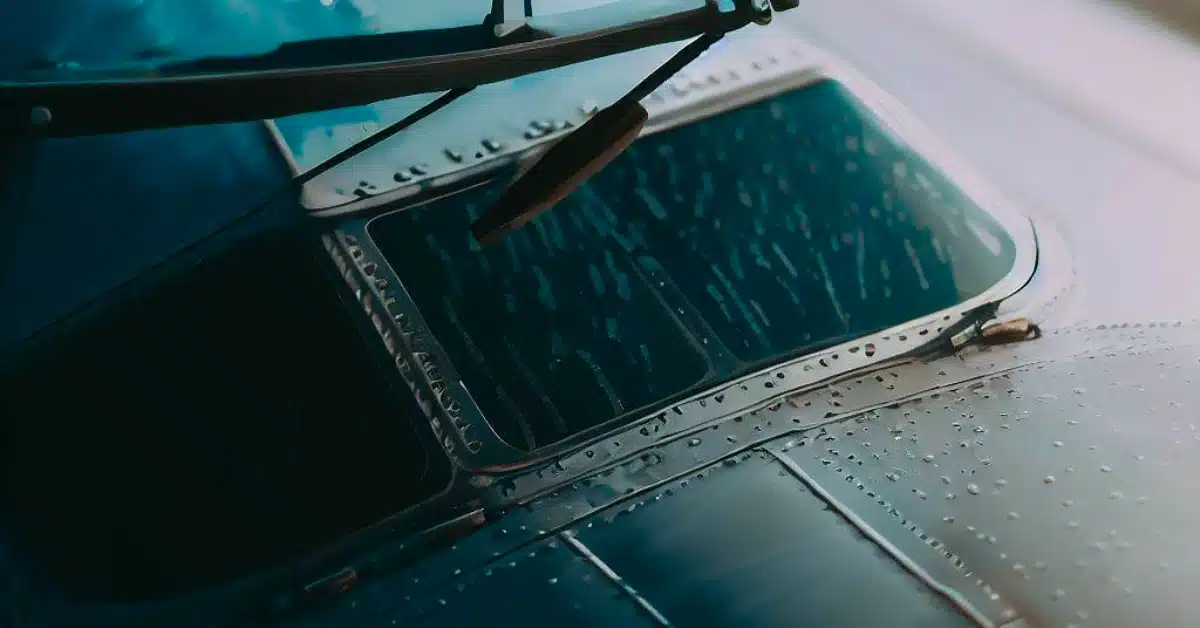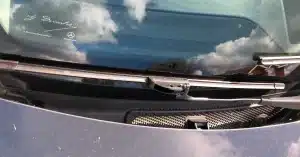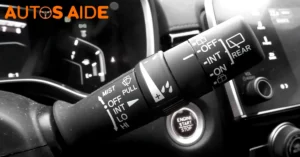Airplanes do have windshield wipers, which serve to increase visibility during taxi, takeoff, and landing when water runs over the nose cone. However, the wipers are turned off once the airplane is in flight.
These wipers are highly effective at sweeping away rain and snow from aircraft windshields, ensuring clear vision for the pilots.
Unlike regular windshield wiper blades, most planes use specialized systems for their plexiglass windshields. These systems consist of wipers, wiper arms, and wiper motor/converter assemblies.
This allows for the separate operation of the pilot’s and copilot’s windshield wipers, ensuring clear vision even if one system fails.
Read More: How To Use Back Windshield Wipers?
How Do Airplane Windshield Wipers Work?
Airplanes do have windshield wipers to ensure clear vision for pilots and copilots. These windshield wipers are operated by separate systems to maintain visibility in case one system fails. Each windshield wiper assembly consists of a wiper, wiper arm, and a wiper motor/converter.
While on the ground, the wipers increase visibility as water runs over the nose cone during taxi, takeoff, and landing. However, once the airplane is in flight, the wipers are turned off. It’s important to note that since most planes have plexiglass windshields, they use different types of systems rather than regular windshield wiper blades.
This is because plexiglass windshields require specific materials and motors to handle the increased air force at airliner speeds. Therefore, airplanes have more advanced wiper systems compared to cars.
Why Do Some Airliners Have Windshield Wipers?
Windshield wipers on airplanes are essential for increasing visibility during taxi, takeoff, and landing. These wipers serve the purpose of clearing water from the nose cone to ensure a clear and unobstructed view for the pilots.
While in flight, the wipers are turned off as the force from the air is much greater and helps to clear any water or debris from the windshield.
However, not all airliners have windshield wipers, as some rely on different systems and technologies for maintaining clear vision during rain and snow.
Aircraft with plexiglass windshields, for example, may use alternative systems that don’t require traditional windshield wipers. By comparing airliners that have windshield wipers to those that don’t, it becomes clear that these wipers are highly effective at sweeping rain and snow away from the windshields.
Do Airplanes Use Windshield Wipers During Flight?
During flight, airplanes do not use windshield wipers. The decision to turn off windshield wipers once the airplane is in flight is to ensure safety and maintain visibility. Using windshield wipers during flight can pose potential risks and limitations.
The force from the air at airliner speeds is much greater, making it challenging for the wipers to effectively clear rain or snow.
Additionally, the wipers can cause increased drag and affect the aerodynamics of the airplane. Instead, alternative methods are used to protect airplane windshields from rain and snow. These methods are highly effective at sweeping away precipitation and maintaining clear visibility.
With plexiglass windshields being the norm, regular windshield wiper blades are no longer used, and other types of systems are employed to ensure pilots have a clear line of sight.
Does A 747 Have Windshield Wipers?
Yes, airplanes have windshield wipers to increase visibility during taxiing, takeoff, and landing. However, they are turned off once the airplane is in flight.
How Do Airplane Windshield Wipers Stay On?
Airplane windshield wipers stay on by using separate systems for the pilot and copilot. They consist of a wiper, wiper arm, and a wiper motor/converter. The wipers are turned off once the airplane is in flight.
Do Pilots Have Windshield Wipers?
Yes, pilots have windshield wipers to ensure clear vision. The wipers are operated by separate systems and consist of a wiper, wiper arm, and a wiper motor/converter. They are used during taxi, takeoff, and landing, but turned off during flight.
Can You Take Windshield Wipers On A Plane?
Yes, you can take windshield wipers on a plane.
Andy’s Opinion
Airplanes do have windshield wipers, but they are not used during flight. The primary purpose of windshield wipers in airplanes is to increase visibility during taxi, takeoff, and landing when water runs over the nose cone. Once the airplane is in the air, the wipers are turned off.
Unlike regular windshield wiper blades, airplanes utilize specialized systems due to the greater force from the air at airliner speeds. While most planes have plexiglass windshields that no longer require traditional wipers, they still have rain protection features. Chemical treatments and coatings are also used to prevent water droplets from sticking to the windshield, enhancing visibility.
Overall, windshield wipers are essential for safe ground operations and ensure pilots have a clear view during critical phases of flight.




